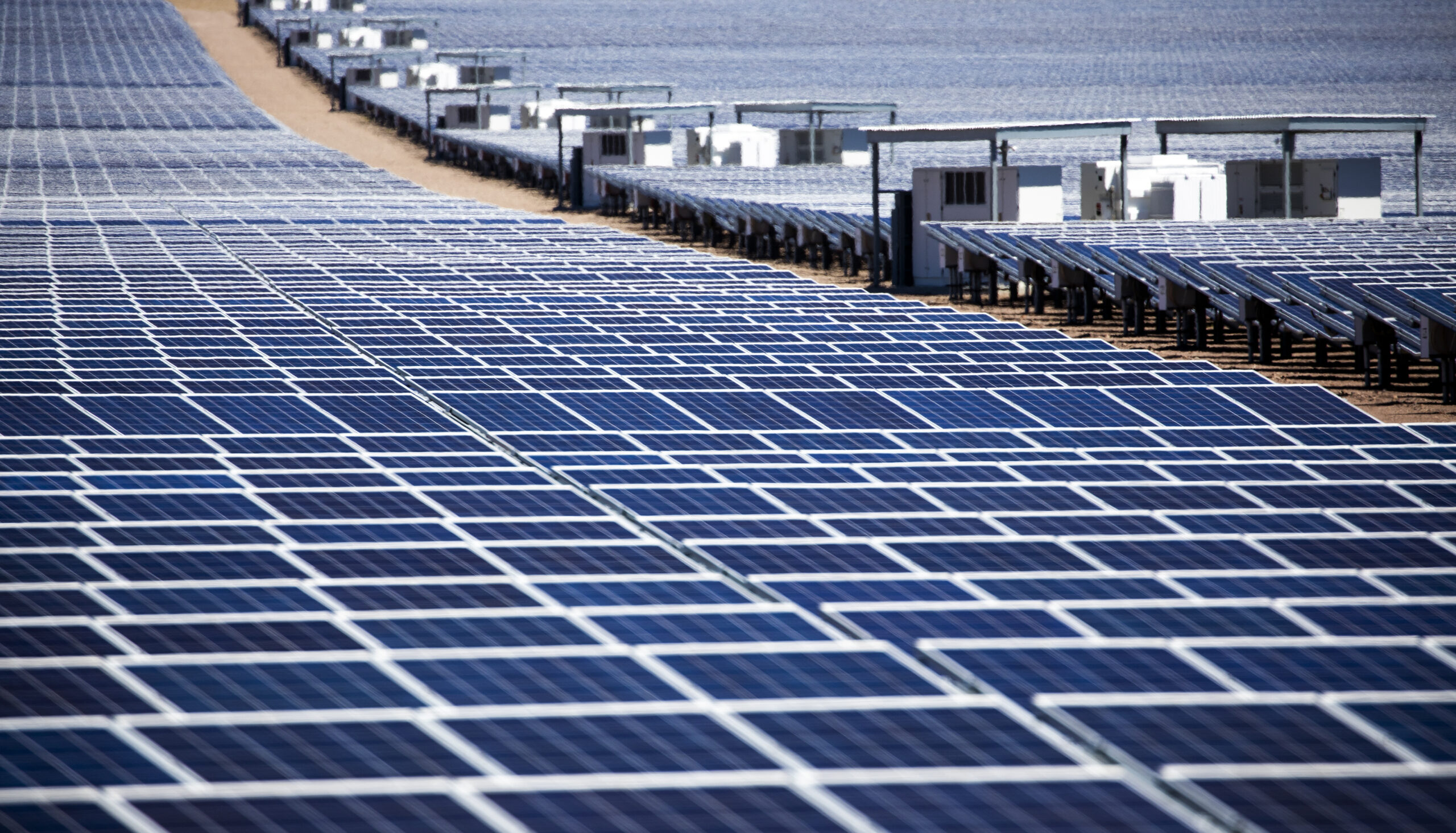The Indy Explains: Question 6, raising renewable portfolio standard to 50 percent

Formal name: The Renewable Energy Standards Initiative
Type of measure: Initiative petition to amend the Nevada Constitution
Summary of what it does: If approved, the measure would raise Nevada’s Renewable Portfolio Standard, or RPS, to 50 percent by 2030. Lawmakers in the 2019 Legislature approved a bill (SB358) that gradually raises that standard to 50 percent by 2030, in line with the proposed constitutional amendment.
An RPS generally requires an electric utility to ensure that a specified percentage of the electricity sold comes from renewable energy, which is tracked through a credit system. Credits can be bought and sold from different entities if a utility is short on its renewable mandate, and can be procured through biomass, geothermal energy, solar energy, waterpower, and wind or energy efficiency measures (until 2025).
If approved, the RPS would not immediately increase to 50 percent overnight — instead rising to 26 percent through 2022 and 2023 and rising by 8 percent every subsequent two-year period until 2030. The 2019 legislation actually sets a higher floor for the RPS than what’s called for in Question 6 — setting a higher portfolio standard through 2024, when it hits a 34 percent minimum.
Because credits can also be produced through energy efficiency programs or for electricity used by power plants that never makes it onto the grid, that often means there is a gap between the reported RPS threshold and actual amount of renewables in a utility’s fuel mix.
NV Energy, which supported the 2019 legislation raising the portfolio standard, has met its RPS goal for the past nine years and had a 24.2 compliance rate in 2018.
What have other states done?: At least 30 states, three territories and Washington, D.C. have adopted an RPS system, with another seven states and one territory establishing nonbinding renewable energy “goals,” according to the National Conference of State Legislatures.
Most of those states have RPS targets between 10 and 45 percent, but 14 states have requirements of 50 percent or greater — California, Colorado, Hawaii, Maine, Maryland, Massachusetts, Nevada, New Mexico, New Jersey, New York, Oregon, Vermont, Virginia, Washington, as well as Washington, D.C., Puerto Rico and the Virgin Islands.
Arguments for passing Question 6: Supporters of the measure say that a higher RPS would result in more renewable energy generation and lower the amount of natural gas imported to the state. It also claims that a higher RPS would result in significant cuts in pollution and a higher air quality, as well as construction of new renewable power plants in the state.
They also point to the declining cost of solar power and energy storage, saying in the long run it will be cheaper to build renewable energy producing facilities in state as opposed to continuing to import natural gas from out-of-state.
“Nevada voters need to act, because we can’t rely on big energy companies alone to take action,” supporters wrote in formal arguments submitted to the secretary of state’s office. “Question 6 is the only measure on the ballot that will guarantee electric utilities keep their promise to move us to renewable energy, while maintaining flexibility so future legislatures can raise standards as technology improves.”
Arguments against passing Question 6: Opponents (in arguments submitted to the secretary of state’s office) cited a wide variety of reasons to oppose the measure, including the fact that the primary funder of the ballot question is a group closely associated with liberal California billionaire Tom Steyer. Opponents also said that amending the state’s Constitution to include an RPS would “handcuff” the state to a renewable energy industry still in its “infancy.”
“The representatives you vote for are better positioned to protect you when they’re allowed to induct renewable energy policies based on merits, rather than mandates that serve to punish consumers and impose flawed policies,” they wrote in formal arguments.
How Question 6 qualified for the ballot: The PAC supporting the ballot measure was able to turn in more than 230,000 signatures to state election officials in June 2018, far above the required 112,544 signatures needed to make it onto the ballot.
The measure passed comfortably on the 2018 ballot, with close to 60 percent of voters voting yes. It needed to be approved again in 2020 to be added to the state constitution.
Primary funders: Since the ballot question was launched in 2017, the political action committee supporting the ballot question (Nevadans for a Clean Energy Future) has raised more than $10.9 million — almost entirely contributed by NextGen Climate Action, a progressive advocacy group founded and funded by California billionaire Tom Steyer.
But since the 2018 election cycle, funding for the group has dropped off. Through 2020, it’s received $50,000 in contributions (from NextGen Climate Action) and spent $46,500, primarily on consultants.
Financial impact: Legislative Counsel Bureau analysts said in 2018 that they couldn’t determine the proposed constitutional amendment’s fiscal impact “with any reasonable degree of certainty,” given uncertainty over how the initiative will be implemented if approved by voters.
Similarly, the agency said it couldn’t predict how electricity prices would be affected if the measure passes.
Status: If approved by voters in the 2020 Election, the provisions of Question 6 would become effective and part of the state Constitution as of Nov. 24, 2020.
